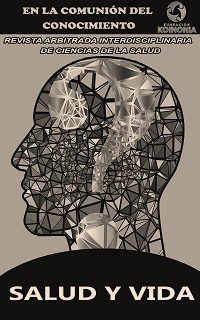Nosocomial infections in patients cared for in intensive care units
DOI:
https://doi.org/10.35381/s.v.v7i1.3543Keywords:
Bacterial infections, pasteurellosis pneumonic, actinobacillus infections, (Source: DeCS)Abstract
Objective: to analyze the prevalence of nosocomial infections occurring in hospital Intensive Care Units. Method: Descriptive documentary study. Results and Conclusion: It is concluded that 10 out of every 100 patients admitted to intensive care units acquire some type of nosocomial infection. The most prevalent infections are respiratory and urinary tract infections, bacteremia and catheter-associated infections, and the most prevalent microorganisms are Escherichia coli, Pseudomonas aeruginosa, Staphylococcus aureus and Klebsiella pneumoniae. All these results may vary according to the health institution.
Downloads
References
Duany L, Suárez S, Cantero T, Águila M, Hernández S, Hernández V. Características clínico-epidemiológicas de pacientes notificados con infección intrahospitalaria en Unidad de Cuidados Intensivos pediátricos. Cienfuegos, 2015-2019 [Clinical-epidemiological characteristics of patients reported with in-hospital infection in Pediatric Intensive Care Unit. Cienfuegos, 2015-2019]. Medisur [Internet]. 2022;20(1):109-119.
Hayward C, Brown MH, Whiley H. Hospital water as the source of healthcare-associated infection and antimicrobial-resistant organisms. Curr Opin Infect Dis. 2022;35(4):339-345. https://doi.org/10.1097/QCO.0000000000000842
Kaul CM, Chan J, Phillips MS. Mitigation of nontuberculous mycobacteria in hospital water: challenges for infection prevention. Curr Opin Infect Dis. 2022;35(4):330-338. https://doi.org/10.1097/QCO.0000000000000844
Su C, Zhang Z, Zhao X, et al. Changes in prevalence of nosocomial infection pre- and post-COVID-19 pandemic from a tertiary Hospital in China. BMC Infect Dis. 2021;21(1):693. https://doi.org/10.1186/s12879-021-06396-x
Ramos-Rodríguez E, Breijo-Puentes A, Castellanos-Díaz A, García-Balmaseda A, Miranda-Pérez Y. Infecciones relacionadas con la asistencia sanitaria en una unidad de cuidados intensivos [Healthcare-associated infections in an intensive care unit]. Revista Electrónica Dr. Zoilo E. Marinello Vidaurreta [Internet]. 2017;41(12).
Meddings J, Manojlovich M, Ameling JM, et al. Quantitative Results of a National Intervention to Prevent Hospital-Acquired Catheter-Associated Urinary Tract Infection: A Pre-Post Observational Study. Ann Intern Med. 2019;171(7_Suppl):S38-S44. https://doi.org/10.7326/M18-3534
Kabała M, Aptekorz M, Martirosian G. Rola środowiska szpitalnego i rąk personelu medycznego w szerzeniu się zakażeń Clostridioides (Clostridium) difficile [The role of hospital environment and the hands of medical staff in the transmission of the Clostridioides (Clostridium) difficile infection]. Med Pr. 2019;70(6):739-745. https://doi.org/10.13075/mp.5893.00856
Wen R, Li X, Liu T, Lin G. Effect of a real-time automatic nosocomial infection surveillance system on hospital-acquired infection prevention and control. BMC Infect Dis. 2022;22(1):857. https://doi.org/10.1186/s12879-022-07873-7
Theron M, Botma Y, Heyns T. Infection prevention and control practices of non-medical individuals in a neonatal intensive care unit: A Donabedian approach. Midwifery. 2022;112:103393. https://doi.org/10.1016/j.midw.2022. 103393
Johnson J, Akinboyo IC, Schaffzin JK. Infection Prevention in the Neonatal Intensive Care Unit. Clin Perinatol. 2021;48(2):413-429. https://doi.org/10.1016 /j.clp.2021.03.011
Fernández-Verdugo A, Fernández J, Escudero D, et al. Vigilancia epidemiológica para microorganismos multirresistentes en una UCI polivalente [Epidemiological surveillance for multidrug-resistant microorganisms in a general ICU]. Rev Esp Quimioter. 2017;30(3):201-206.
Houghton C, Meskell P, Delaney H, et al. Barriers and facilitators to healthcare workers' adherence with infection prevention and control (IPC) guidelines for respiratory infectious diseases: a rapid qualitative evidence synthesis. Cochrane Database Syst Rev. 2020;4(4):CD013582. https://doi.org/10.1002/ 14651858.CD013582
Vilca J, Rodríguez JP, Philco P. Factores de riesgo asociados a infecciones intrahospitalarias en el paciente crítico [Risk factors associated with nosocomial infections in the critically ill patient]. Rev. Med. La Paz. 2020;26(1):9-17.
Céspedes M, Velasco Z. Gérmenes más frecuentes en infecciones asociadas a la atención en salud en la UTI Pediátrica [Most frequent germs in healthcare-associated infections in the pediatric ICU]. Rev. Med. La Paz. 2017;20(1):20-25.
Arroyo LM. Incidencia y actuación de enfermería sobre las infecciones nosocomiales en las unidades de cuidados intensivos [Incidence and nursing action on nosocomial infections in intensive care units]. Npunto. 2020;3(30):4-31.
Published
How to Cite
Issue
Section
License
Copyright (c) 2023 Alba Angelica Barreto-Gordon, Adisnay Rodríguez-Plasencia, Vladimir Vega-Falcón, Vladimir Vega-Falcón, Elsa Josefina Albornoz-Zamora

This work is licensed under a Creative Commons Attribution-NonCommercial-ShareAlike 4.0 International License.
CC BY-NC-SA : Esta licencia permite a los reutilizadores distribuir, remezclar, adaptar y construir sobre el material en cualquier medio o formato solo con fines no comerciales, y solo siempre y cuando se dé la atribución al creador. Si remezcla, adapta o construye sobre el material, debe licenciar el material modificado bajo términos idénticos.
OAI-PMH: https://fundacionkoinonia.com.ve/ojs/index.php/saludyvida/oai.









